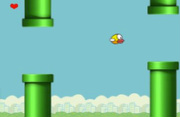 With flappy bird removed from online stores, you may be all in a flap over where you are going to get your next flappy related fix. Well worry no more because, thanks to a free online tool called touchdevelop, you can now create your very own flapptastic app by simply following a few easy steps. What is touchdevelop? touchdevelop is an online app creation tool from Microsoft Research. Originally designed to develop Windows Phone 7 apps, the touchdevelop Web App now allows you to develop Windows Store apps suitable for Windows 8 touch screen devices and runs on iPad, iPhone, Android, PC, Mac, Linux. There is also a dedicated touchdevelop app on the Windows Phone 8. Tutorial Created for the UK hour of code, this easy to use step-by-step tutorial will teach you how to create your very own flappy bird clone. Just follow this step-by-step tutorial and your flappy bird woes will soon be over. Click here: https://www.touchdevelop.com/nczy All in a flap - Create your very own flappy bird clone with this step-by-step tutorial. Hungry for more? If this tutorial has wet your appetite and you want to learn more! Why not sign up for UK hour of code (running between the 3rd and 9th March 2014). Through fun tutorials and lesson plans, Hour of code plans to be the biggest ever national initiative to get students, teachers and parents learning to code in just sixty minutes. Hour of Code has already been extremely successful in the United States with more than 15 million participants. Register for the UK hour of code here: http://uk.code.org Where next? Like to find out more about touchdevelop or want to try out some more tutorials? Below is a list of courses and schemes of work that introduce you to the programming concepts and the environment of the touchdevelop Web App. touchdevelop hour of code – official tutorials from the touchdevelop team Build your first app - free online course from Microsoft touchdevelop challenge hour of code – step-by-step tutorials created to support the UK hour of code touchdevelop Challenge - series of lessons and challenges to get students building games and apps with touchdevelop. games4learning - Created by David Renton (Extended Lecturer in Games Development: Reid Kerr College, Scotland) A series of YouTube tutorials which introduce students to game design using touchdevelop. Ray Chambers' touchdevelop Scheme of Work - A complete scheme of work for touchdevelop which sees students design and create an app from scratch.  In this week’s lesson, I introduced students to the next topic – Software. For this unit, students are expected to know about operating systems, utility programs and application software. In this first lesson, I explored operating systems. Learning Objectives:
Lesson 1 & 2: Theory (Operating systems) Suggested time: 100 mins Starter Before the lesson, I pre-prepared 6 devices: 1 PC (with Windows 7 installed), 1 PC with command prompt loaded, 1 iPad (with iOS 7 installed), 1 iMac (with OSX Mountain Lion installed), 1 Raspberry Pi (with Debian installed) and 1 PC with Blackberry Emulator loaded (Download here) - I downloaded the Blackberry Curve 9380 simulator. At the start of the lesson, I spread the devices around the classroom and, as the students arrived, directed them to one of the workstations. Once all the students had been allocated a workstation, I instructed the students to try out the Operating Systems in front of them and make notes on ease of use, speed etc. (Note: for command prompt users, I issued a set of simple instructions e.g. cd, dir, edit etc.) I also asked them to try some simple tasks such as open a text file, copy and paste a file, draw a picture using a painting package etc. After 3 minutes, I asked each group to move to the next workstation and try a different workstation. I repeated this process until each group had experienced all the different operating systems. Interesting note: All the students seemed to love playing with the command prompt. Next, I asked the students to explain the similarity and differences of the different Operating Systems they had been exploring – I encouraged them to explain the differences with the user interface and then explained that we call these interfaces the Graphical User Interface (GUI) and that this is one of the things controlled by the Operating System. Alternatively, if you don’t have time or don’t have access to a number of different Operating Systems, instruct students to research different operating systems on the Internet and make notes about each. I have included some links below: OSX - http://www.youtube.com/watch?v=hon6FqY5ZQ4 Windows 7 - http://www.youtube.com/watch?v=2LWljyZEaAM Linux - http://www.youtube.com/watch?v=I8ik8pDTgJE Main: I displayed some icons on the board for some popular operating systems. I then invited the students to try to name them all. I then explained that these are all examples of Operating Systems. I then explained that the Operating System, also known as system software, is responsible for managing:
Next, I split the class in to mixed ability groups (Depending on your class size, I recommend either 5 or 10 groups). I then informed the students that they would be taking on the roll of the teacher for the lesson. (I based this on an idea suggested by Ryan Lowe via Computing At School. You can download the original activity here: http://community.computingatschool.org.uk/resources/1418) I then gave each group a topic at random using a random name selector (see classroom management tools). Alternatively, you could place the 5 topics in envelopes and ask someone from each group to pick an envelope at random. Finally, I instructed the students to create a POWToon (www.powtoon.com) based on their topic and explained that they would be presenting their POWtoons to the rest of the class at the end of the lesson. (see example below) Plenary: Once everyone had finished and checked their POWtoon for errors etc., I asked each group to present one of their topics to the rest of the class. I used the random name selector again to choose each group and topic at random so that we covered each topic at least once. See example below: As Ryan suggests in his post, the success to this task was providing a list of key questions to help the students think and reflect when researching and putting the information together. As Ryan also suggests, rewards such as chocolates for the best group also help! Resources:
Operating Systems – Introduction: http://www.youtube.com/watch?v=5AjReRMoG3Y OS PowerPoint – http://www.pwnict.co.uk/computingGCSE/computingResources.html (Click on Software, followed by Lesson 1 - OS) BBC Bytesize - http://www.bbc.co.uk/schools/gcsebitesize/ict/software/4operatingsystemsrev1.shtml Teach-ICT - http://www.teach-ict.com/gcse_computing/ocr/213_software/operating_system_functions/miniweb/pg2.htm  Concluding the theme of how data is stored in computers, in this week’s lesson, I got students to create their own revision games for unit 2.1.4 using Zondle. Also, as a little treat, I decided to issue my students with my own test on section 2.1.4 of the GCSE OCR spec. – Binary representation of data. Lesson 1: Revision Suggested time: 50 mins Starter I started by giving students a quick test that I created using Zondle: Main: I informed students that they will be creating revision games using a free online creation tool called Zondle. I demonstrated on the board how to create a game with Zondle and how to add questions. As I demonstrated how to add questions to the game, I asked students to suggest possible questions. Finally, I gave students their usernames and password to login to Zondle and instructed them to create a series of revision games based on unit 2.1.4. I told students that they could use my example (from the start of the lesson) to help them get started. Plenary: Students attempted each other’s revision games. Lesson 2: Test Suggested time: 50 mins Main: I issued each student with a test I created covering the topics in unit 2.1.4 (Binary representation of data) of the OCR GCSE specification. The test is based on sample assessment material and past exam papers released by OCR. (Click on link below)
Plenary: I asked students to swap papers and went through the answers. I also explained to students the model answers using the marking criteria (See below)
|
AuthorSimon Johnson Microsoft Innovative Educator Expert / MIE Trainer
Minecraft Cert. Educator / Global Mentor
CAS Master Teacher
Raspberry Pi Cert. Educator
Tickle Ambassador
Archives
June 2017
CategoriesAll Algorithms Cpu Fundamentals Hardware Input & Output Memory OCR A451 Software Storage |
||||||||||||
Search by typing & pressing enter
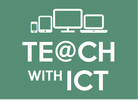
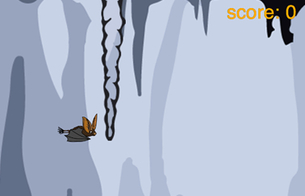
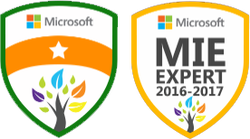
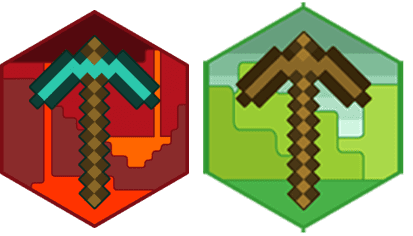



 RSS Feed
RSS Feed
